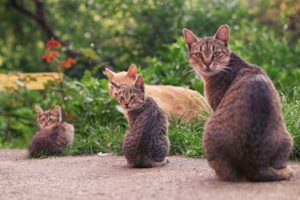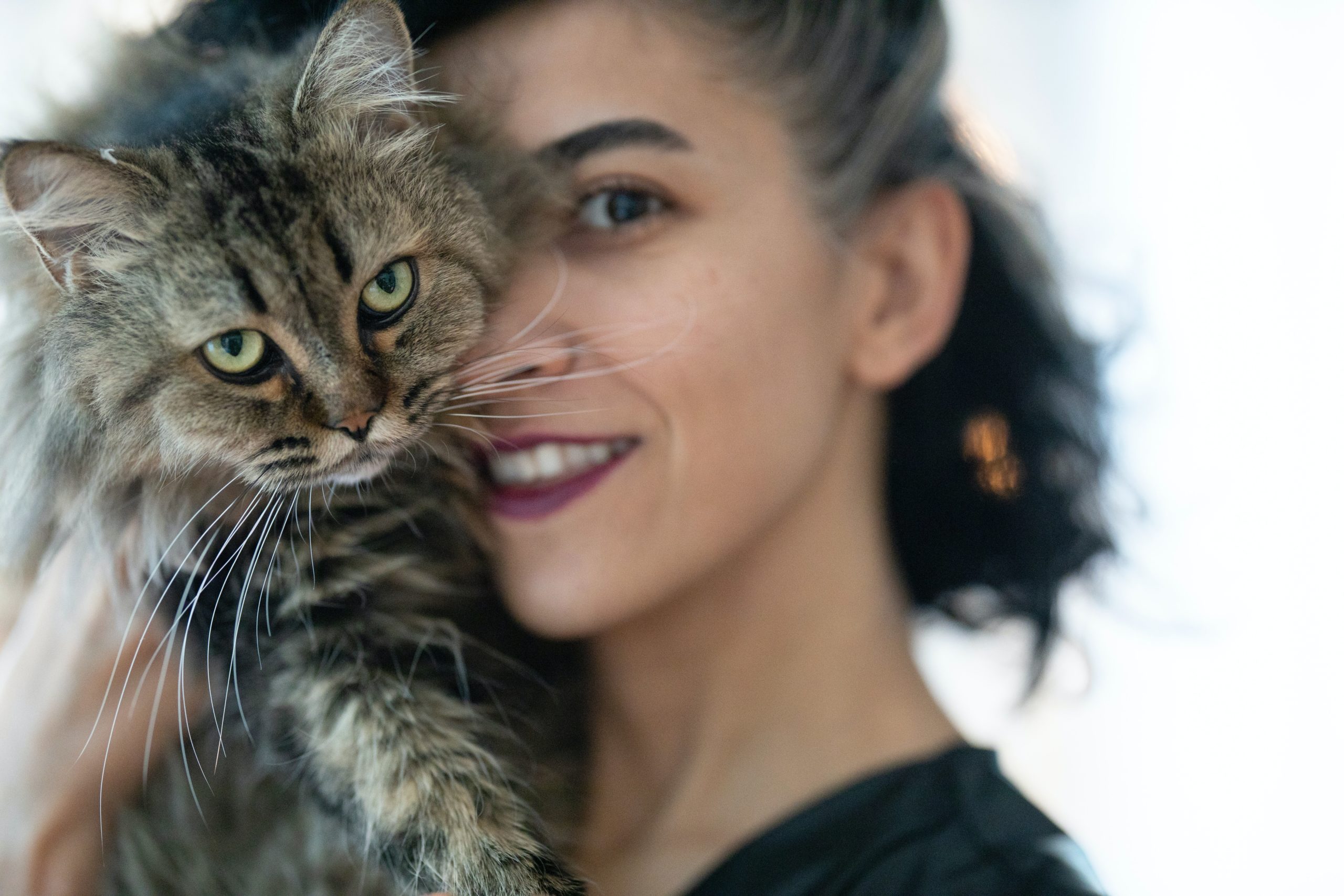Ever wondered how old your cat is in human years? Martha Wil has penned this fascinating blog for us so you can know how kitties’ ages correspond to our life cycle! Martha runs a website dedicated to pet health, fitness and wellbeing – take a look at the link at the bottom of the page to see more!
How Old Is My Cat In Human Years?
If cats really had nine lives, then there would be no way to tell their age in human years. You wouldn’t know which life to start. Worse still, there is no way of knowing how long the cat has been alive! The first rule to follow when expressing a cat’s life in human years is this: all cats live once.
That said, there are many formulas you can use to express a cat’s age in human years. The most popular one is the seven-year rule. But in our view, that approach is too simple and does not capture a cat’s life’s stage – a crucial element. Instead, compare your feline buddy’s life stages to yours and draw parallels. Then you will have a rough idea of how old your fur baby is in human years. Here’s how to do it.
Understand the Cat’s Life Stages
According to the American Animal Hospital Association (AAHA), cats generally have four life stages:
- Kitten – birth to one year
- Young adult – 1- 6 years
- Adult – 7 – 10 years
- Senior – Over 11 years
You could subdivide each life stage into senior/junior or early, intermediate, and mature. But these four remain the most basic life stages.
Your cat will experience and express different physiological and behavioural characteristics at each life stage. You can use these characteristics to draw parallels with human life stages, and voila! You have a pretty good idea of your fur baby’s age in human years.
Here’s more on the characteristics and how they compare with humans:
Parallels Between a Cat’s Life Stages and Human Years
Kitten (birth to 1 year)
Most kittens move into new homes during their first year. This is when a cat experiences the most changes in her life. Her body will change from a baby to a playful juvenile, an energetic adolescent to a beautiful young feline.
The changes are both internal and external. Females begin their estrous cycle at about 6-7 months old, and males also start spraying at about the same age. At this age, kittens experience tremendous psychological changes also. They develop from an infant – entirely dependent on the mother – to a young independent adult. But their puerile behaviour often gives them away.
When you parallel this stage with humans, you could say a kitten is equivalent to a human from infancy to about 16 years.
Young Adult (1 to 6 years)
At this age, your cat’s energy levels are at their peak. But they still have a lot to learn to develop their skills and cognitive abilities. If you have more than one cat, you will notice heightened rivalry. The cat will also reach her sexual maturity and, depending on the breed, could be territorial and aggressive. Be sure to play games with the cat, and socialize with them.
This stage is comparable to a human at the young adult stage – 17 to 40 years.
Adult (7 to 10 years)
Your cat begins to slow down in activity. They may also seem to develop a liking for sleeping rather than playing. Besides slowing down, your cat will also start gaining weight and showing signs of ailments. Regular check-ups at the vet, a healthy diet, and physical activity would be most beneficial to the cat.
In human years, you could say the cat is entering midlife, between 44 and 58 years.
Senior Cats (over 11 years)
At this age, the cat rapidly slows down. The cat is no longer interested in going outdoors to play. She may seem to like lying down. Symptoms of conditions like arthritis become more pronounced.
This life stage for humans begins at approximately 60 years of age and continues to super-senior age – over 85 years.
Although these characteristics are typical in cat breeds, the lifespan and life stage characteristics may vary. It depends on various factors.
Factors that Influence a Cat’s Life Stage
Depending on individual characteristics and environmental factors, the life stage and age could deviate from the typical values above. Here are some factors that may influence the cat’s life stage:
- Breed – varieties like the sphynx often have a shorter lifespan and would experience accelerated life stages. For example, the young adult age could be less than five years.
- Diet – A malnourished cat may not express the typical characteristics of its life stage. On the other hand, an adult obese cat may exhibit characteristics of a senior due to their excess weight.
- Lifestyle (indoor or outdoor) – Outdoor cats often have a shorter life expectancy due to exposure to multiple hazards like car accidents.
- Health care – If you take good care of your kitty, they may experience longer life stages. A healthy, active, and well-fed cat could live much longer than anticipated.
Conclusion
The adage says age ain’t nothing but a number. But when you want to express your cat’s age in human years, you must consider a lot more. It’s not just about popping numbers. You should know your cat well enough to discern its life stage and draw parallels to humans. This guide will help you identify a few characteristics and pinpoint the kitty’s age.
Written by Martha Wil
Website: https://ourfitpets.com/
If you’ve got a pet subject that you’re knowledgeable about, send an email to social@hugglepets.co.uk and tell us all about it!
To browse all of HugglePets’ cat products, click here! And for any questions, queries, or concerns, contact us on Facebook.





